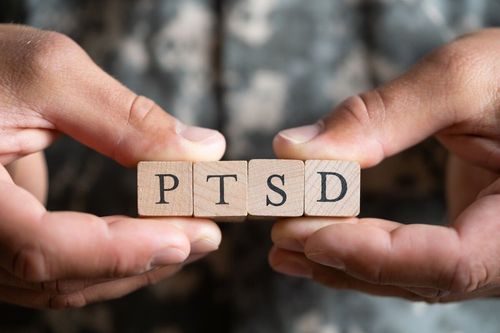In most cases, healing a toxic relationship is only possible if you distance yourself from the toxic person. Toxic people go through different phases of behavior: In one phase they can be charming and friendly, while in the next they can be extremely hurtful and manipulative. This changeability makes it difficult to disengage because the hope often arises: "Maybe things will get better after all, I'll give him or her another chance."
In 99.99% of cases, however, a toxic relationship cannot be saved. The problem lies not within the relationship itself, but in the deeply rooted behavior of the toxic partner. People in such relationships tend to develop an extremely high tolerance level and begin to ignore their own needs. They often keep giving the toxic partner new opportunities and risk destroying themselves emotionally in the process.
Toxic behavior is often firmly anchored in the personality and almost impossible to change. It is therefore important to end the relationship, turn around and start a new life based on self-esteem and personal growth.
My name is Rico Brunner, energy field therapist since 1998, and in this article I explain how to heal from a toxic relationship and find peace again.
What is typical of a toxic relationship and how can it be healed?
The typical thing about a toxic relationship is that the non-toxic person often feels guilty. You may feel as if you are constantly doing something wrong, are not enough or are responsible for the problems yourself. At the same time, you notice that the other person shows contradictory behavior, which further confuses and stresses you.
However, it is not possible to heal a toxic relationship as it is based on the destructive behavioral patterns of the toxic partner. Such people usually have no interest in changing their behavior. Instead, they adapt it to continue to exert control over their partner and maintain their toxic dynamic.
The only way to heal is to end the relationship. Healing in this case means detaching yourself from this toxic dynamic and protecting yourself. By separating yourself from the toxic person, you begin the process of finding yourself again and recovering from the adverse effects of that relationship.
Why does a relationship become toxic and what dynamics need to be recognized for healing?
A relationship can become toxic for various reasons. Sometimes it is because two people are simply no longer compatible and fail to end the relationship in time. In such cases, frustration arises and both partners start to blame each other. However, this is usually a "mild" form of toxicity, which is more common, especially in younger years.
A truly toxic relationship arises when one of the two partners acts toxically and the other does not. The toxic person is not born that way but is pushed more and more into this behavior through experiences and personal decisions. It is important to understand that this toxicity does not arise from a "victimized state", but from conscious or unconscious decisions to develop toxic behavioral patterns and not curbing them.
Recognizing these dynamics is crucial for healing: The toxic person will only change if they want to - and that rarely happens. It is therefore important for the non-toxic partner to end the relationship, protect themselves and take responsibility for their own healing.
How do you recognize a toxic relationship and what steps promote healing?
You can recognize a toxic relationship by the fact that you are in a state of constant stress within the relationship. In a healthy relationship, you feel safe, secure and have space to grow. In a toxic relationship, all of this is missing. Instead, you constantly feel tense because you never know how the other person will react. Through manipulation, toxic people often manage to blame you for their mistakes, making you feel guilty - even if you haven't done anything wrong.
Healing a toxic relationship starts with moving away from it. The first step is to stay true to yourself and focus on your own healing. It's important to take back control of your life by ending the relationship and focusing on finding yourself again.
Healing means freeing yourself from psychological stress and manipulation. It requires that you become aware of your own needs and learn to protect yourself. This is the only way you can find your way back to a healthy, stress-free lifestyle in the long term.
What behaviors are typical of toxic relationships?
It is typical of a toxic relationship that the toxic partner tries to manipulate and control the non-toxic person. It's about exerting power and getting the other person to follow their own wishes. But even if the non-toxic person does everything they can to please the toxic partner, the accusations and control remain.
Toxic people tend to oppress their partner and never get enough of it. They are constantly looking for new ways to reinforce their dominance and accuse the other person of not doing enough - even when they are already giving their all. This excessive demand leads to a havoc in which the non-toxic person increasingly feels that they are responsible for everything.
Healing a toxic relationship is impossible in such cases. The toxic partner's behavior is deeply rooted in their personality and will continue to escalate even if the other partner completely adapts. Healing can only occur if you detach yourself from the toxic relationship and begin to protect yourself.
How long does it take to heal after a toxic relationship?
Healing after a toxic relationship can take very different lengths of time, as it depends on various factors. If you are lucky enough to be in a new, healthy relationship after a toxic relationship, the healing process can be much faster. A loving and supportive relationship gives you a sense of security and safety, which helps you to overcome the toxic injuries within 3 to 12 months.
However, if you remain alone after a toxic relationship and hold on to the negative imprints you experienced in the relationship, healing can take years. In such cases, you run the risk of adopting your partner's toxic patterns and turning them against yourself. This can significantly delay your progress as you unconsciously perpetuate the destructive cycle.
However, if you manage to clearly recognize that the injuries were not your fault and actively engage in healing, the process usually takes between 6 and 24 months. The exact duration depends on how intense the injury was, how long the toxic relationship lasted and how much you can emotionally detach from it. It is crucial that you take the time you need and remain patient and loving towards yourself.
Why is it difficult to break away from toxic relationships and how can healing be achieved?
It is often difficult to get out of a toxic relationship because you realize too late that you are in one. The toxic partner puts the non-toxic person under constant pressure and in an overwhelmed state. In this state, it is difficult to make clear decisions as stability and clarity are lost due to constant stress.
Toxic people often manage to make you feel that you are to blame for the problems. As a result, you take responsibility on yourself, believe you must change and remain trapped in the relationship. To break this cycle, it is important to put a distance between yourself and your toxic partner. One proven method is to take a break from the relationship - for example, two to three weeks in which you have no contact with the toxic partner. During this time, you can focus on yourself again and reflect on the situation more clearly.
Healing a toxic relationship begins when you realize that the problem is not you, but the relationship itself. Creating distance, seeking support and working on your self-worth are crucial steps. Only when you gain this clarity can you fully detach and heal from the toxic dynamic.
Are emotionally weak people more susceptible to toxic relationships?
At first glance, you might think that emotionally weak people are particularly susceptible to toxic relationships. But in fact, emotionally weak people often cannot withstand toxic dynamics for long and break off the relationship sooner. They do not have the emotional capacity to endure the constant pressure and manipulation from toxic partners over a long period of time.
People who mean well and are strongly committed to a partnership are much more at risk. These include constructive and reflective people who are willing to work on the relationship and stand up for the other person. However, these qualities make them vulnerable to toxic people who take advantage of these efforts. A typical pattern might look like this: The toxic partner criticizes the other person with statements like "You're not trying hard enough," whereupon the good-natured partner believes they need to try harder even though they're already giving it their all.
This positivity and willingness to support is often used as a trap by toxic people. They show superficial gratitude or signal a willingness to change just to keep the other person emotionally attached. However, this supposed recognition is just "the honey" with which they perpetuate their toxic game. In order to break out of such a dynamic, it is crucial to recognize the manipulation and set clear boundaries.
Conclusion – How to Heal a Toxic Relationship and Find Peace Again
Healing a toxic relationship usually means breaking free from it entirely and disrupting the harmful dynamic. Toxic behavior is often deeply rooted in the other person’s personality and rarely changeable. What matters most is learning to recognize your own needs, setting clear boundaries, and creating distance from the toxic individual.
Healing begins with the realization that you are not responsible for the toxic behavior, followed by a conscious decision to withdraw emotionally and physically from the relationship. In the long run, healing lies in rebuilding self-respect and reconnecting with your true self.






